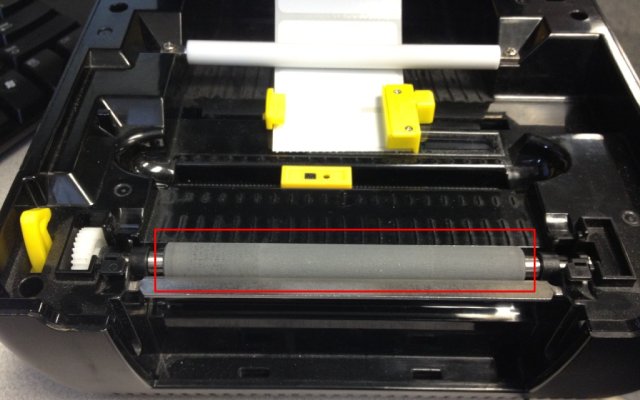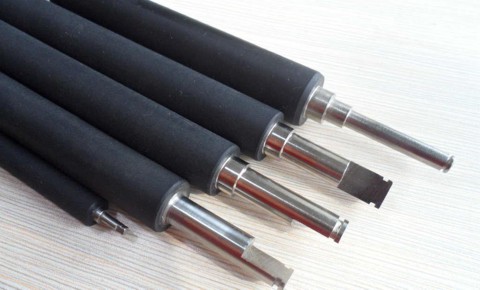Knowledge about platen rollers of the thermal printers
Thermal printers are widely used in industries ranging from retail to logistics due to their speed, reliability, and low maintenance. A critical component ensuring their performance is the platen roller. This article explores its definition, functions, structure, materials, and manufacturing processes.

A platen roller in a thermal printer
1. Definition of Platen Roller
A platen roller is a cylindrical component in thermal printers that applies uniform pressure to ensure direct contact between the thermal printhead and the heat-sensitive paper (or ribbon). It acts as a pressure-transmitting medium, enabling consistent heat transfer during the printing process. Unlike inkjet or laser printers, thermal printers rely on heat rather than ink, making the platen roller essential for maintaining print quality.

2. Function of Platen Roller
The platen roller serves multiple critical roles:
- Pressure Application: It pressed the thermal paper against the printhead, ensuring even heat distribution for precise image formation.
- Heat Conduction: Its surface material (often head-resistant rubber or silicone) facilitates efficient heat transfer from the printhead to the paper.
- Paper Guidance: It aligns the paper during printing, preventing misfeeds or jams.
- Printhead Protection: By maintaining controlled pressure, it minimizes wear and tear on the printhead's delicate heating elements.
3. Structure and Materials
A platen roller typically comprises three layers:

(1) Core
- Material: Steel or aluminum.
- Function: Provides structural rigidity and ensures dimensional stability under pressure. The core's surface may be precision-ground to maintain flatness.
(2) Heat-Resistant Coating
- Material: Silicone rubber or fluoropolymer(e.g. PTFE).
- Function: Withstands high temperatures (up to 200°C) and resists abrasion. Silicone is preferred for its flexibility and thermal stability.
(3) Surface Texture
- Design: Micro-grooves or a matte finish to enhance grip on thermal paper.
- Thickness: Varies by application, ranging from 1–3 mm for compact printers to 5 mm for industrial models.
4. Manufacturing Process
Producing a platen roller involves advanced engineering to balance durability and precision:
Step 1: Core Fabrication
- Material Selection: Steel (e.g., 304 grade) for corrosion resistance.
- Machining: CNC milling or extrusion to achieve exact dimensions.
- Surface Preparation: Polishing to reduce friction and ensure smooth contact with the coating.
Step 2: Coating Application
- Extrusion Molding: Heat-resistant rubber is extruded onto the core.
- Curing: Vulcanization under controlled heat and pressure to bond the coating.
Step 3: Finishing
- Grinding: Precision grinding to achieve a uniform surface texture.
- Quality Testing:
Pressure Testing: Validates load-bearing capacity.
Thermal Cycling: Assesses performance under repeated heating/cooling cycles.
Step 4: Assembly
Key Considerations in Design
- Elasticity: The coating must deform slightly under pressure to accommodate paper irregularities.
- Thermal Expansion: Materials must expand uniformly to avoid warping.
- Durability: Resistant to chemical degradation from adhesives or environmental factors.
Maintenance Tips
- Regular cleaning with isopropyl alcohol to remove dust and residue.
- Avoid abrasive tools to prevent coating damage.
- Replace rollers every 6–12 months in high-use environments.
By understanding the platen roller’s role and construction, users can optimize printer performance and extend equipment lifespan. For specialized applications (e.g., medical or industrial thermal printing), custom designs with reinforced cores or hybrid coatings may be required.


